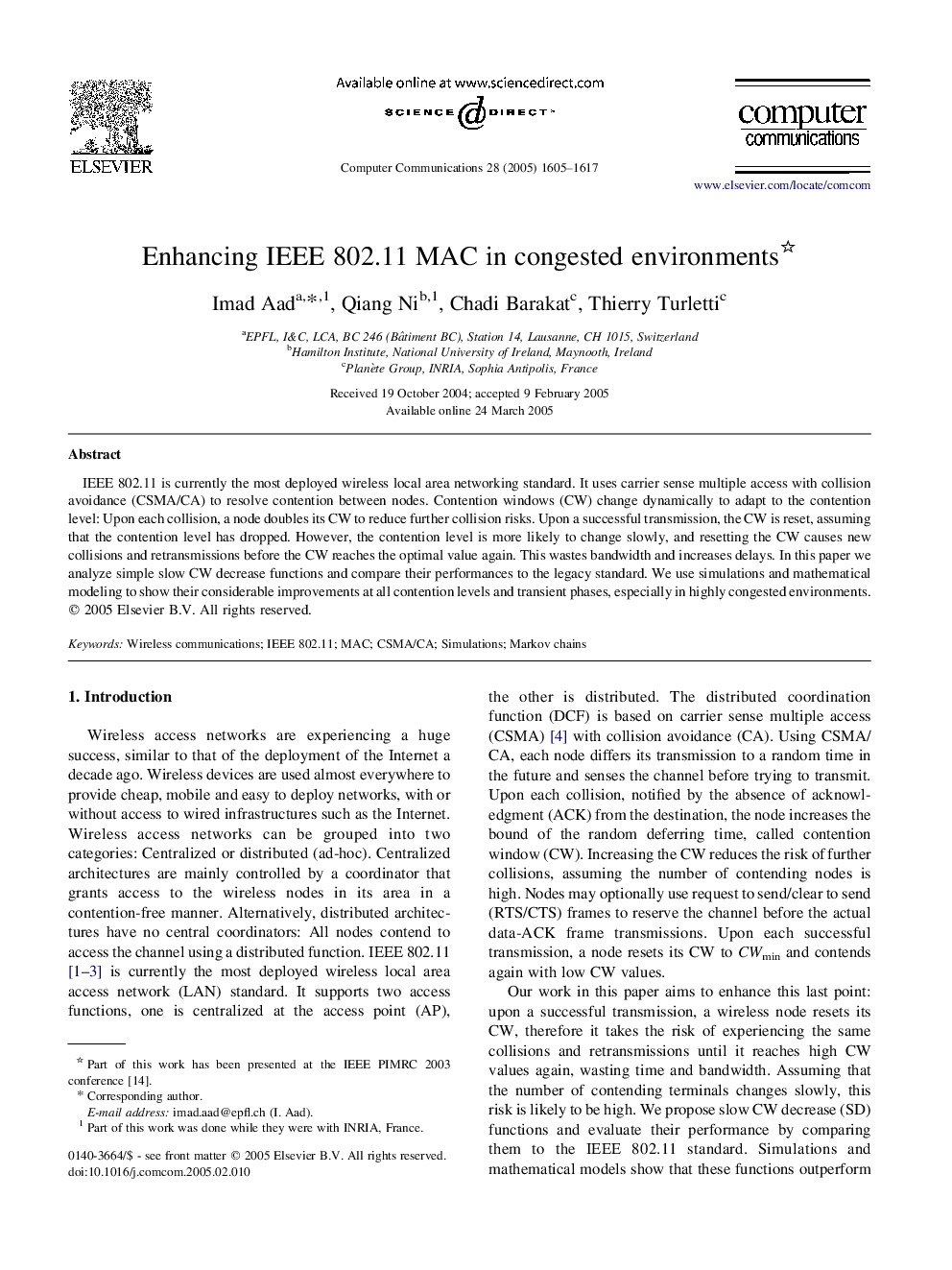| Article ID | Journal | Published Year | Pages | File Type |
|---|---|---|---|---|
| 10338123 | Computer Communications | 2005 | 13 Pages |
Abstract
IEEE 802.11 is currently the most deployed wireless local area networking standard. It uses carrier sense multiple access with collision avoidance (CSMA/CA) to resolve contention between nodes. Contention windows (CW) change dynamically to adapt to the contention level: Upon each collision, a node doubles its CW to reduce further collision risks. Upon a successful transmission, the CW is reset, assuming that the contention level has dropped. However, the contention level is more likely to change slowly, and resetting the CW causes new collisions and retransmissions before the CW reaches the optimal value again. This wastes bandwidth and increases delays. In this paper we analyze simple slow CW decrease functions and compare their performances to the legacy standard. We use simulations and mathematical modeling to show their considerable improvements at all contention levels and transient phases, especially in highly congested environments.
Related Topics
Physical Sciences and Engineering
Computer Science
Computer Networks and Communications
Authors
Imad Aad, Qiang Ni, Chadi Barakat, Thierry Turletti,
